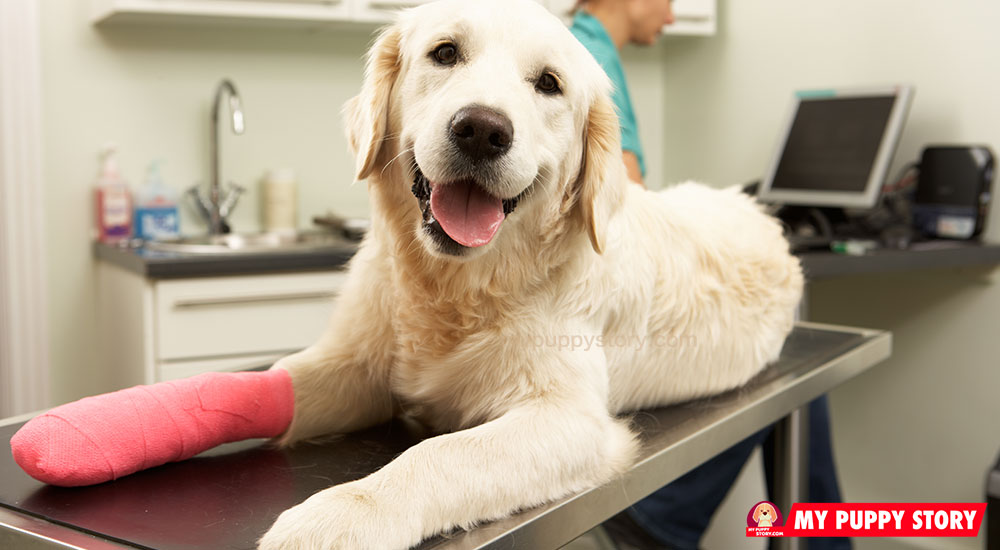
You may have decided to purchase pet insurance for your dog or cat after lots of careful research and policy comparisons. Chances are, though, that your decision is simply based on the fact that pet insurance isn’t overly expensive and the gut feeling that it “makes sense.”
Both are true in most cases. However, if you purchase a policy when your dog is young and he lives a normal life span, the total you’ll pay for his coverage will be thousands of dollars. That’s why it’s smart to dig a bit more deeply into what you should and shouldn’t expect when you buy pet insurance, before pulling out your checkbook or credit card.
Pet insurance isn’t a one-size-fits-all purchase. There are a number of decisions you’ll be required to make before you sign on the dotted line.
First of all, there are three categories of pet insurance: accident only, accident-and-illness, and wellness care. The vast majority of pet owners choose accident-and-illness policies, since those cover the two largest types of veterinary expenses they may face over a dog’s lifetime. (You can buy a policy to cover your cat as well, but we’re primarily focusing on dogs because more than 80% of all pet insurance sold in America is canine insurance.) Wellness coverage can be added on to a policy or purchased separately, but it’s not usually a smart investment.
Next, there are deductibles and copayment options to choose, just as we do for our own health insurance plans. Deductibles can be charged on a per-incident or per-year basis and you’ll be able to choose a deductible level that fits your budget, with lower deductibles meaning higher premiums. After the deductible has been met you’ll have to pay a percentage of your pet’s medical expenses, and once again the size of the copayment will have a major impact on the cost of the policy.
The one thing you don’t have to worry about is whether your vet is “in-network” or “out-of-network.” You can have your dog treated anywhere.
Those are the basics. Now, let’s look at what you can expect from your pet’s insurance policy.
 What is the Best Time to Buy Insurance for My Dog?
What is the Best Time to Buy Insurance for My Dog?The best answer to this question: as soon as you can. And after reading the previous section, you can probably understand why.
The most critical factor is the preexisting conditions limitation we’ve discussed. It’s true that the majority of serious diseases don’t show themselves until a pet reaches adulthood, but waiting to buy insurance until then isn’t normally a good idea. There’s no guarantee that your dog won’t contract an illness sooner, and there’s also the “loophole” that allows insurers to refuse payment for any conditions whose symptoms may have appeared in earlier years – even if there’s no proof that those symptoms were related to a recently-diagnosed illness or disease.
A final reason to buy insurance early in your pet’s life involves accident coverage, which most owners smartly decide to purchase. Cancer or kidney disease may be more common later in life, but accidents can happen at any time. In fact, they’re more likely when a dog is younger and more active; the chances of a dangerous encounter with a coyote or car, or even a mistimed leap from the family room couch, are much greater for your frisky pup than for an older dog who sleeps much of the day away.
It’s true that every year you delay purchasing pet insurance you’ll be saving a few hundred dollars or so. But if your reasoning is that you’ll only be faced with major expenses for a serious disease like cancer or diabetes later in his life, think again. Veterinary care after a major accident can easily cost $2,000-$3,000 or more, even if surgery isn’t required. And surgery can push the bill well over $5,000, particularly for a large dog.
How can a vet or animal hospital justify those prices? Figure in costs for x-rays, scans and blood work (several hundred dollars apiece), hospitalization with all of the required nursing care, electronic monitoring, meds and fluids ($1,000+ per day), plus fees for veterinary specialists and surgeons, and you’re looking at an eye-popping bill. Even treatment for a common canine illness like bloat (too much stomach gas created after eating a large meal and then exercising vigorously) can cost more than $1,000 if surgery isn’t required, and as much as $5,000 including surgery and possible complications. The costs aren’t unfair in the least, but they’re a lot for most people to handle.
That’s why most people who’ve faced enormous or life-altering medical bills for their dog make sure to purchase insurance for their next pet, as soon as they take him to the vet for the first time.
How much does a car cost? That’s obviously an impossible question to answer; not only is a Kia going to be much less expensive than a Porsche, a Kia’s price will vary considerably depending on model, optional equipment and even the dealership you buy the car from.
Thankfully, pet insurance is much less expensive than even a Kia, but that doesn’t make it any easier to list firm prices for any type of policy. What we can do, though, is look at some of the average price points you’ll find for various types of pet policies.
For dogs, we chose a medium-sized, mixed-breed, three-year old neutered male living in a suburb of a large city, and a similar English bulldog (the most expensive breed to insure) for our examples. To compare prices for cats, we chose a three-year old, domestic short hair neutered male living in the same area. We compared three of the major pet insurers to come up with our price points.
Accident Only
Fewer and fewer companies offer this option, because most owners prefer to cover their pets for illness and disease as well as accidents. Those providers who still provide accident-only coverage for dogs will charge an average of $10-20 per month. Remember, this policy won’t cover any expenses for illnesses, diseases or costs possibly connected to pre-existing conditions. Only trauma-related procedures and related treatment are eligible for reimbursement.
Accident-and-Illness
Often called “major medical” plans, these are the options chosen by the large majority of pet owners. The policies cover almost all non-wellness veterinarian expenses with the exception of pre-existing conditions and cosmetic procedures. We’ve looked at three of the most popular pet insurance providers and the choices they offer for accident-and-illness coverage, in order to illustrate the major price points you’ll find for this type of policy.
Let’s start with our three-year old medium-sized, mixed-breed pup, and a fairly standard major medical plan. A policy with a $250 annual deductible and 90% reimbursement after the deductible is met (which represents a 10% copayment) would cost between $35-$40 per month, with the lower premium carrying a $5000 annual maximum and the higher premium placing no ceiling on reimbursements.
Changes that appear to be small can actually have a big impact on premiums. If you decide to eliminate the deductible completely, that increases the monthly payment to $100. And if you keep the deductible at $250 but boost your copayment to 30% (meaning you get only 70% reimbursement after the deductible), the average premium drops to around $30 per month.
Let’s look next at the most expensive breed to insure (because of hereditary disease and illness liability), the English bulldog. For the same “standard” accident-and illness policy we’ve discussed ($250 annual deductible, 10% copayment after deductible), the monthly premium would average between $48-$115 per month. Why such a huge variation? The lower number is with a $5000 annual maximum, but the higher one has no maximum annual payout. Placing no ceiling on payouts is a very risky proposition for companies insuring an English bulldog, so the resulting premiums are much higher.
That’s not the highest possible premium for our English bulldog, either. If you still want a low 10% copayment and no ceiling on payments, but want to lower the deductible to $100 instead of $250, you’ll have to pay almost $150 per month. You can even get a policy with 10% copayment and no deductible at all, but that will cost you more than $200 per month with a $5000 annual maximum payout.
Finally, let’s insure our cat. A standard policy with a $250 deductible and a 10% copayment will range between $20 and $40, with the lower premiums usually carrying a $5,000 annual maximum. You can lower that monthly bill to slightly less than $20 if you increase the deductible or the copayment.
But even with a $100 deductible, 10% copayment and no annual maximum, you can still find major medical insurance for your three-year old kitty for less than $40 per month. The bottom line: for cats, it makes sense to shop around and buy the best policy you can find, because you won’t pay much more for the low deductible and copay.
Wellness Coverage
We’ve mentioned several times that in almost all cases, it costs less to pay for your pet’s normal veterinary care out-of-pocket than to take out a wellness insurance policy. Here are the numbers.
The average amount a dog owner spends each year on vet bills is $350, and a cat’s annual visits, shots and the like add up to about $250. The average wellness plan (remember, it doesn’t cover treatments for illnesses, diseases or accidents) costs about $25 a month for dogs and about $12.50 per month for cats.
That sounds like a bargain – until you figure in deductibles ranging from $50-100, and limitations on every category of treatment. Once you do that, the numbers come out just about even, with the insurer naturally on the “winning side” of even. It’s easier to forego monthly premiums and just pay out-of-pocket for your pet’s regular care when it’s time to visit the vet.
